A tunic is an element of a long-cut women's wardrobe. An elongated blouse can be called a versatile piece of clothing that goes well with trousers, jeans, shorts and skirts. Long sweaters can be worn as a dress. Numerous photos of models represent a variety of styles and combinations with other elements of clothing.
Tunic features
A tunic is a versatile wardrobe item. Various styles of elongated body shirts will hide figure flaws and emphasize advantages. Such sweaters are worn as casual wear and as a festive outfit. The long model will replace the dress.
Any plain or colored fabrics are suitable for sewing tunics. Winter models are made from dense materials, light weightless fabrics are used to make summer dresses.
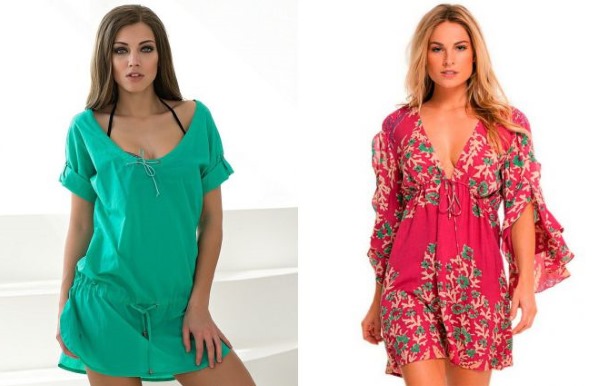
The tunic can be knitted independentlyusing knitting needles or a hook for this.
Advantages and disadvantages of tunics
Long sweatshirt advantages:
- hides the flaws of the full figure;
- a large selection of fabrics for manufacturing;
- a wide variety of universal models;
- versatility of use;
- the tunic can be worn at any event.
The disadvantages of long body shirts can be attributed only one thing: any style of such a sweater will not suit a certain female figure.
Who are tunics suitable for?
Long blouses are suitable for women of any age and body type. A tunic is a must-have item in a pregnant woman's wardrobe.
How to choose the right tunic dress: basic criteria
When choosing a thing, be sure to consider:
- physique features;
- style and length of the product;
- fabric and its colors.
It is also worth focusing on the style of the tunic: sports, festive, casual, beach.
Puffy women are advised to opt for semi-fitted or loose-fitting products, with a high waistline and a deep cut in the neckline.
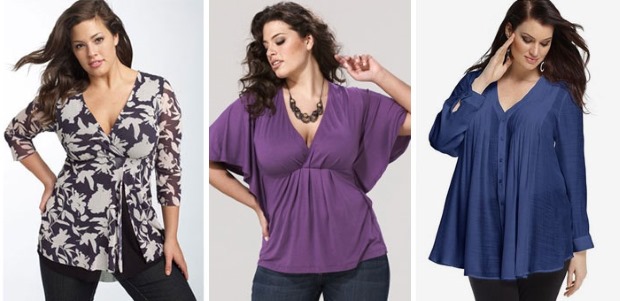
For thin women, it is better to choose a fitted model or a model with a belt. A long blouse that does not cover the shoulders will look especially impressive on a slender woman.
Types of tunics
There are many different types of elongated body shirts:
- for daily home wear;
- for sports;
- resort and dressy models;
- models with zippers or buttons;
- asymmetrical tunics;
- models with a variety of unique colors and embroidery.
For summer, it is better to choose a sleeveless tunic with a bright pattern or a blouse with open shoulders and wide sleeves. Autumn and spring models are knitwear of medium length in neutral colors, a discreet pattern is allowed.
Correctly chosen item will fit any trousers and skirts. Knitted models are suitable for socks in winter.For festive occasions, a self-sufficient tunic made of shiny fabric with lace or embroidery is suitable.
A tunic dress (the photo will further familiarize with the options) can be presented in a variety of styles.
Long Sleeve Styles:
| Style | Description |
| Glam Grunge | The thing looks shabby, shapeless, often with raw edges. May have rough seams, holes, patches. |
| Casual | Tunics are designed for everyday wear. They look a little sloppy, do not emphasize the merits of the figure. |
| Oversize | Non-fitting spacious tunics, suitable for puffy women. |
| This is boho | Loose summer tunics in linen fabric. Decorated with folk style embroidery, fringe, lace, tassels. |
Fashionable colors of tunics 2018
A tunic or miniature dress can already be called a classic piece of clothing. Numerous photos prove that with each new season, only color options and tailoring nuances change.
In 2018, the following colors of long blouses are relevant:
- the hit of the 2018 season is metallic;
- all shades of green;
- various shades of blue from blue to the darkest;
- cream tones;
- peachy and calm pink;
- classic colors - black and white.
Optimal length
Tunic can be of any length, this parameter for not short sweaters ranges from a slightly elongated T-shirt to a half-length dress. There are no strict length restrictions for this item. The length depends on the style, model and height of the woman.
Summer models, for example, are always above the knee. Autumn, spring and winter products are elongated knitwear or woolen sweaters that reach to the hips.
A tunic dress, the photo clearly demonstrates this, the length can be from mid-thigh to mid-calf.
Types of fabrics for tunics, their pros and cons
A variety of fabrics are suitable for sewing tunics. Weightless flowing materials are chosen for summer modelssuch as silk, satin or chiffon. Unfortunately, such things can only be worn during the summer months.
For wearing in the cold season, long blouses are sewn from jersey and corduroy. It is advisable to purchase sweaters made of natural fabrics (linen, cotton), but such things have one drawback: they wrinkle easily and are poorly smoothed.
Therefore, clothing manufacturers have learned to add synthetic fibers to natural fabrics. Such semi-natural materials have many advantages: clothes made from such fabrics do not wrinkle, do not fade after washing, and are pleasant to the body.
Linen
Flax is a plant from the stems of which fibers are produced, and from them fabric is created. The natural color of linen is gray or light brown. The fabric is smooth with a matte sheen. The absence of small knots indicates a good quality of the material. Linen fabric is strong, durable, wear-resistant, dirt sticks to it poorly.
The material is breathable and ideal for summer wear. If non-natural fibers or silk are added in the manufacture of linen material, this will endow the linen with beneficial properties: greater shine, crease resistance, elasticity.
You can wash light-colored linen in hot water, and colored linen at a temperature of 30 ° -40 °. It is very easy to sew clothes from linen fabric on your own: the material is easy to cut, pliable, a simple model can not even be swept away. Linen is an ideal material for sewing summer shirts, dresses, tunics, trousers and skirts.
Jersey
Knitted fabric is a thin knitted fabric, which includes:
- yarn;
- natural threads (silk, wool, linen, cotton);
- synthetic fibers (viscose, lycra, elastane).
Combined knitwear is chosen for tailoring containing natural and artificial fibers. The surface of such material will be smooth. A special knitting machine is used to make knitted fabrics.
Properties of knitwear:
- affordable;
- ease of care;
- the material is pleasant to the touch, durable, breathable, practical, elastic, hygienic;
- things are not electrified.
Knitted fabrics:
- men's pants and sweaters;
- women's sweaters, dresses, tunics;
- baby clothes;
- bed linen and sleepwear;
- sports and outerwear;
- hats, scarves, gloves, socks.
Rules for the care of knitted items:
- When hand washing, the rinse water is changed several times, a conditioner is used. Things should not be squeezed strongly, rubbed (pellets may appear), bleach with chlorine bleach.
- Select gentle modes for automatic washing.
- Knitted items cannot be washed in hot water.
- It is impossible to dry and store knitted items on hangers, otherwise the items will quickly lose their shape.
- Products can be steamed.
- The spools are easily removed with a razor or a special machine.
Cotton
Cotton is a natural fabric that is made from the finest threads of the cotton plant. Cotton material is widely used in the textile industry.
Advantages of cotton fabrics:
- naturalness and environmental friendliness;
- strength, high temperature resistance;
- cotton is easy to wash, does not electrify, does not cause allergies;
- inexpensive material;
- cotton is easy to bleach and dye;
- the fabric is ideal for sewing light clothes;
- some types of cotton fabric are used to make warm clothing.
Disadvantages of the material:
- after the use of acidic and alkaline agents, the fabric becomes discolored and loses strength;
- crumples, sits down;
- without bleach, the white fabric starts to turn yellow.
To avoid negative changes in the fabric, manufacturers add synthetic fibers to the cotton material during manufacture.
Summer tunic staple
Staple is a fabric for creating summer clothes with a mixed composition. The material mostly consists of cotton, synthetic components (viscose, lavsan) in the fabric from 20% to 40%. Staple clothing is soft, lightweight, non-translucent, elastic, wear-resistant, does not fade in the sun, does not cause allergies, antibacterial, environmentally friendly, inexpensive.
The disadvantages of the staple include:
- products shrink after washing;
- things wrinkle a lot;
- when wet, the strength of the material is lost;
- staple products are difficult to manufacture.
Summer clothes for children and adults are sewn from the staple. In order for things from a staple to remain like new longer, they must be washed in warm water using gentle means, squeezed very gently, dried in air, ironed from the wrong side of the product through gauze.
Chiffon
Chiffon is a flying, slightly transparent fabric. Chiffon is made from natural raw materials or from synthetic fibers. To obtain high quality fabrics, the materials used for production are combined. For the manufacture of chiffon fabrics, silk, cotton, viscose, polyester, polyamide are used.
Chiffon clothes are lightweight, do not fade or fade, durable, pleasant to the touch, dry quickly, and look rich.
Disadvantages of chiffon clothes:
- the fabric is difficult to process;
- raw edges crumble;
- chiffon clothes are not suitable for daily wear;
- careful care is required.
Chiffon fabric is mainly used to create beautiful special items:
- evening dresses, tunics, blouses, wedding dresses and accessories;
- children's party dresses;
- stoles, scarves;
- curtains and canopies;
- decor elements.
Chiffon garments will last longer if washed with the delicate wash in a special bag for delicate fabrics with a mild detergent, place horizontally to dry. Clothes made of silk chiffon are best dry-cleaned.
Knitted tunics
An elegant knitted long sweater can easily replace a dress. Knitted tunics have a wide variety of patterns: playful openwork, strict monochromatic, multi-colored. When buying a winter model, you need to pay attention to the quality of the yarn. You should not stop your choice on tight-fitting models, the tunic should only slightly indicate the contours of the figure.
Knits can be worn all year round. Summer models are colored mesh or fishnet products with deep cutouts.For knitting summer tunics, cotton or linen yarn is used.
Autumn-spring models are tied more tightly, have long sleeves, fit the figure, and are knitted from acrylic or semi-woolen thread. Winter things are knitted from woolen thread, they can have voluminous collars.
Summer knitted sweaters can be worn on their own as a dress or supplemented with discreet shorts or trousers. Knits for fall, winter and spring go well with just about anything. When putting on a tunic, it should be remembered that it is she who is the main element of the image.
Styles for obese women
A long blouse must be present in the wardrobe of a fat woman. Tunic styles designed for puffy fashionistas are designed to hide the plump waist, hips and buttocks. Conversely, such a thing will accentuate the chest with a deep cut in the neckline.
Models of elongated sweaters for obese women:
- tunic-trapeze - stretches the silhouette and smooths the shoulders;
- fitted blouse should only slightly emphasize the curves of the body;
- asymmetric tunic hides figure imperfections, adds attractiveness;
- sports tunic suitable for sports and daily wear;
- off shoulder blouse emphasize sexuality.
Overweight women are recommended to wear long body shirts with any trousers or as a dress. You should not buy blouses only in strict colors, a bright colored thing is always relevant and original, especially during the vacation season.
What to wear with beach, sports, classic tunics
A beach blouse is worn with any shorts or just as a dress. The image is complemented by dark glasses, a hat or scarf, sandals or slates, a straw bag. A long sweatshirt is worn with pants or breeches of the same style, shorts, leggings, jeans, or as a dress. Shoes should also be athletic.
The classic tunic can be worn with tapered cropped trousers, skinny jeans, leggings, leather pants, with some skirts, on your own. A white classic elongated jacket will look good with cropped trousers in light or contrasting black tones, jeans.
Any colored tunic is combined with dark trousers. Not wide model, reaching mid-thigh, will replace the dress. Under a classic blouse, you must also wear classic shoes: high-heeled shoes, ankle boots, boots.
How to crochet a tunic yourself: diagrams and description
Summer openwork tunics are crocheted. The most popular and easy-to-follow pattern for a summer sweater is a sirloin mesh, any needlewoman can handle it. Before starting work, you need to pick up the yarn (cotton thread is more suitable, it will take about 300 g), take measurements, calculate the loops. The product is knitted from 2 halves, which are connected with side seams.
The back is knitted first. A pre-calculated number of loops is dialed with an air chain. The 1st double crochet is knitted into the 9th loop of the air chain, followed by 2 air loops, again a double crochet and 2 air loops. So continue knitting to the end of the row.
Knit all the following rows in the same way, not forgetting to dial 4 air loops at the beginning of each row. Columns with crochets should be located strictly on top of each other. When the length of the back reaches the required length, finish working with it.
The front part to the neck is knitted according to the same description. To knit the neckline, the central 2 squares are not knitted and the work is divided into 2 parts, each of which is knitted separately from the other with a fillet net. With each row, the number of crochet stitches is reduced. When you reach your shoulders, finish knitting.
The sleeves are knitted in a similar pattern from bottom to top. When performing a tapered sleeve, the number of double crochets is gradually increased to the armhole. A wide sleeve is knitted straight and without additions. Performing the side seams of the sleeves only up to half, cuts are obtained.
The finished sleeves are sewn to the tunic so that the slits are on the outside of the arm.The finished item can be decorated with matching flowers, also crocheted.
A tunic dress (photos represent unique options) can be crocheted in the style of patchwork or patchwork.
Work begins with measurements and pattern creation. Any jacket can be suitable for a pattern. Each patch or motif is knitted separately. A tunic may require up to 200 flaps, it all depends on their size. Lay out ready-made motives on the pattern. The back, front, sleeves are collected from the patches and sewn. For sweaters knitted in patchwork style, the neckline is a boat.
How to knit a tunic
Tunic dress (its photo is presented below) easily knits on the needles. Any drawing is suitable for working on a product. For a fitted and fitted knitted model, it is better to choose one of the elastic bands, the yarn can be any.
It is recommended to knit a summer elongated jacket and a decorative tunic-cape with openwork patterns, use cotton threads in the work. For winter sweater-dresses, dense knit patterns and woolen threads are chosen.
Step by step execution:
- Select knitting needles and matching threads. It should be noted that the thread should be 2-2.5 times thinner than the knitting needle. For a knitted tunic with long sleeves, up to 500 g of yarn may be required.
- Calculate the required number of loops by taking preliminary measurements.
- Start knitting the back according to the pattern of the selected pattern. Knit straight fabric to armhole.
- Decrease a few stitches at the beginning and end of the row for the armhole. Decrease to produce 2-3 rows in a row.
- Next, knit to the neck. When the fabric is tied to the base of the neck, close several center loops. In each new row, continue to close the outermost inner loops. Close at the desired height. Count the number of stitches in each shoulder.
- The front half of the tunic is knitted up to the neckline, as well as the back. You need to start securing the neck loops lower than it was on the back half. You also need to close the loops from the center.
- Continue knitting to length. Before attaching the stitches to the shoulders, make sure that the number of stitches for each shoulder at the front and back is the same.
- Knit the sleeves in the same pattern. For sleeves extended from above, add loops every few rows. No additions are required for straight sleeves.
- When all the details are connected, you will need to sew in front with the back along the side and shoulder seams. Fold each sleeve in half and sew on the wrong side too. Sew sleeves to armholes. Crochet the neckline.
Tunic dress sewing patterns, step by step process
Step-by-step creation of a paper sample of a long blouse:
First, the following measurements are taken:
- tunic length;
- half of the chest circumference and measurement of the front of the chest;
- back width at shoulder blades;
- back length to waist;
- shoulder length;
- half of the circumference of the neck, waist, hips.
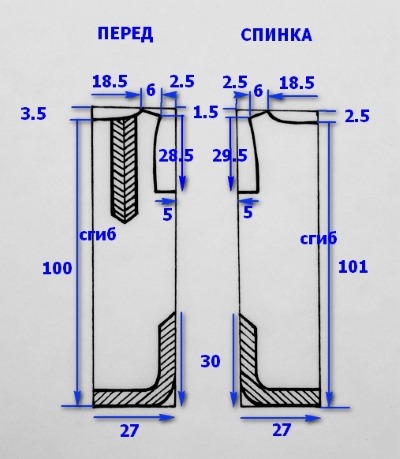
- A rectangle is drawn on paper. Its length is equal to the length of the tunic, and its width is calculated as follows: 30-50 mm is added to the half of the chest circumference.
- Divide the upper part of the rectangle into 3 zones: the width of the back (measuring the back in width, divided in half), the width of the armhole zone (divide half of the chest circumference by 4, increase the result by 2), the remainder is assigned to the chest zone after the designation of the first 2 zones.
- In the back area, the lines of the neck and shoulder are indicated. To calculate the size of the neck, add 5 mm to 1/3 of the half of the neck circumference. The total is measured on the upper line to the left, put a mark. Now divide the half of the neck circumference by 10 and add 8 mm. The final result will be the elevation of the marked point.
- Further on the template, the edge of the neck is marked with an angle. The contour of the shoulder is drawn obliquely, its length is calculated as follows: 16 mm are added to the length of the shoulder, which will go to the dart. For it, 40 mm is measured from the edge of the neck, a mark is put. Measure another 16 mm, mark. The dots are the edges of the dart.
- From the outer point, a perpendicular segment is lowered by 60 mm, marked with a dot.This point is combined with the inner point of the dart. The line will be slightly sloped, but its length should also be 60 mm.
- In the area of the armholes, mark the chest line, draw the armholes of the front and back. The armhole height is calculated using the formula: half of the chest circumference is divided by 4 and 70 mm is added. The final score is measured down from the edge of the shoulder, note.
- Run the armhole on the other side of the paper sample, mark. Combine the points, this is how the chest line is drawn. The front and back lines of the armholes are depicted with a rounding.
- Now draw the front of the neck, shoulder and chest dart. The neck width in front and back will be the same. The depth is calculated by the formula: add 20 mm to 1/3 of the half of the neck circumference. The height of the edge of the neckline is: ¼ add 35 mm to the chest circumference. The shoulders and chest darts on the front shelf of the template are marked in the same way as on the back.
- Next, you need to divide the sample into front and back shelves. To do this, measure the width of the armhole zone and divide by 3, mark with dots. A vertical line is drawn through the left point, it will be the side line of the shelves.
- The waist zones are marked on the template (the measurement of the length of the back to the waist is measured from the top of the template) and hips (the previous measurement is halved, the total is measured from the waist).
- Depict side bends and darts at the waist.
- At the last stage of creating the template, the hips and lower rounding are depicted.
And finally, a step-by-step photo of how to sew a tunic without a pattern:
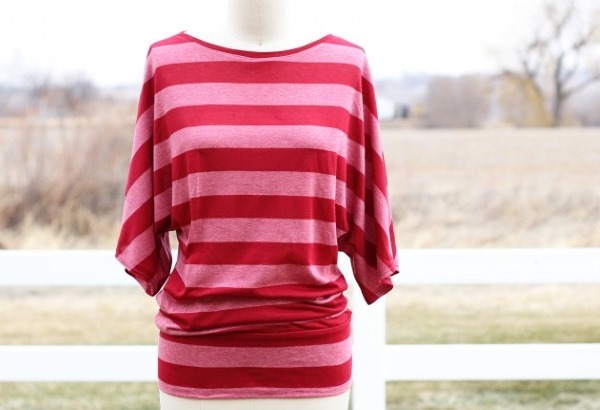
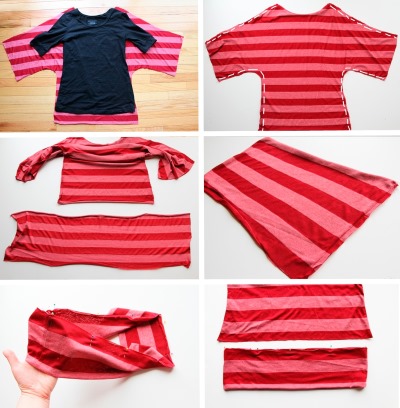
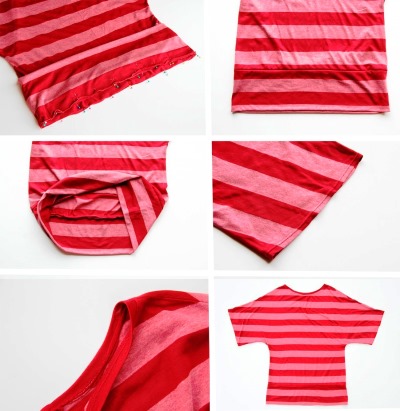
A tunic is a piece of clothing that combines simplicity and taste. In the wardrobe of a woman who knows how to dress correctly, there should always be several of these things. If necessary, a long body shirt will replace the dress. Numerous photos reveal the true beauty of these things.
Author:Doroshenko E.N.
Article design:Natalie Podolskaya
Video about women's tunics
Video about a tunic dress (photo):

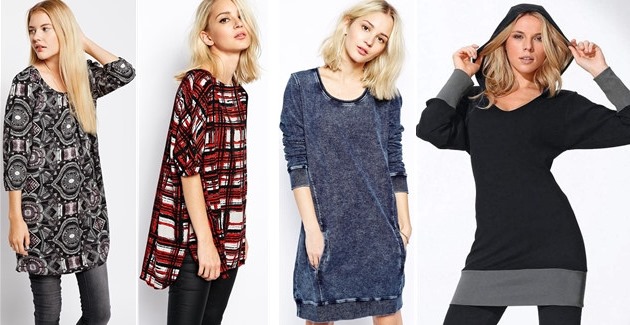
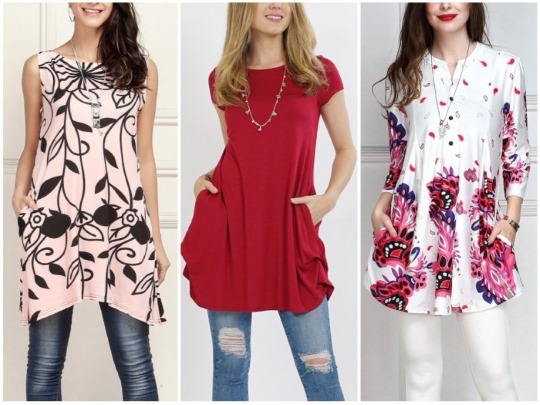
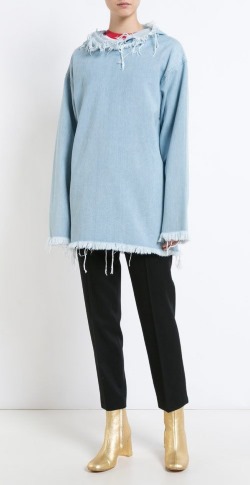
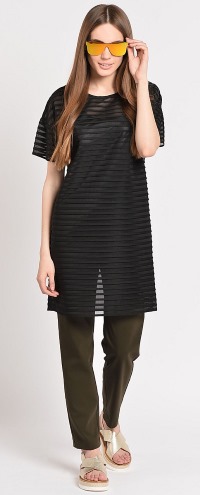
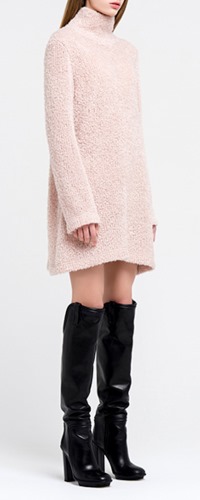
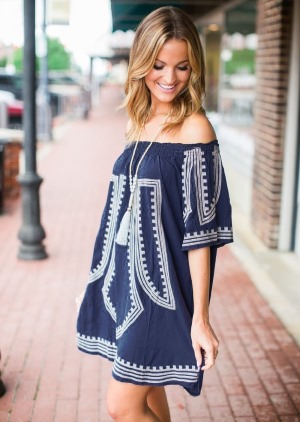
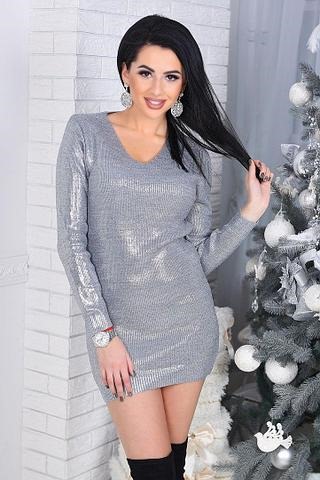
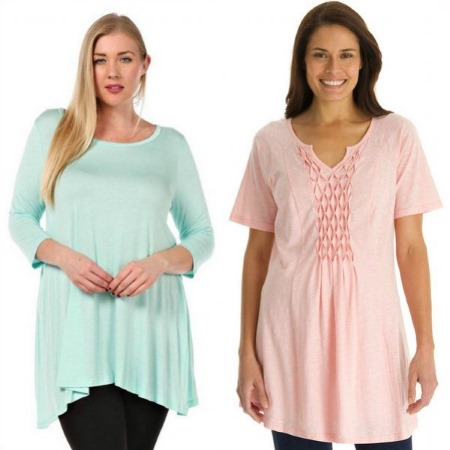
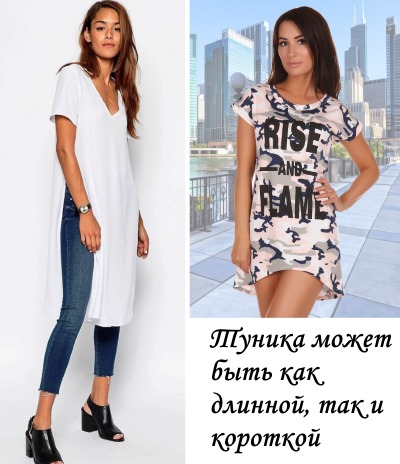

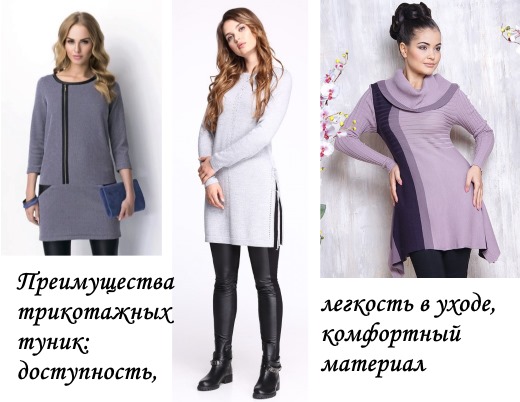
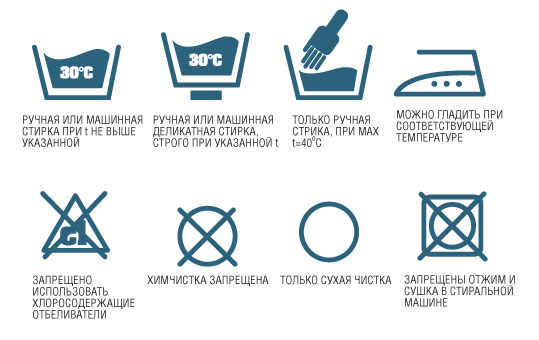
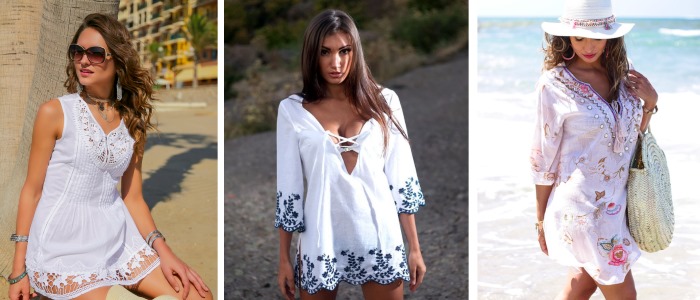
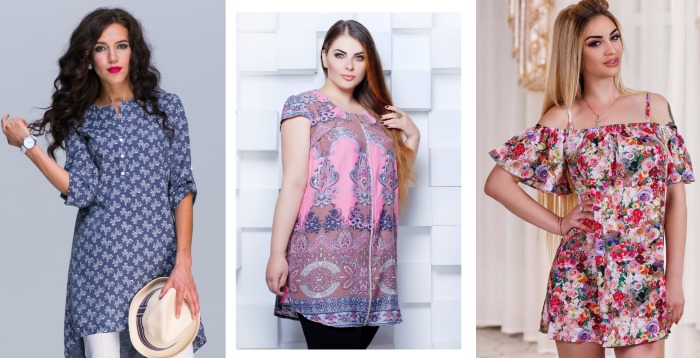
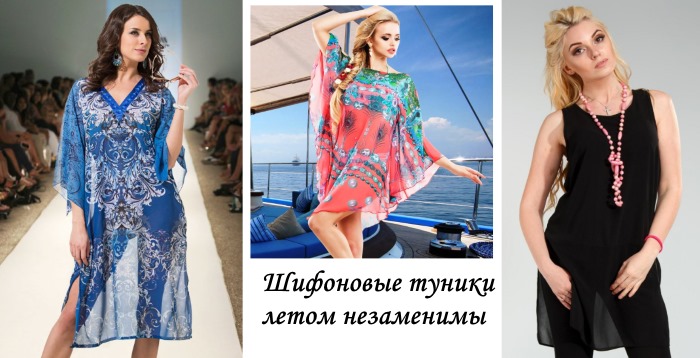
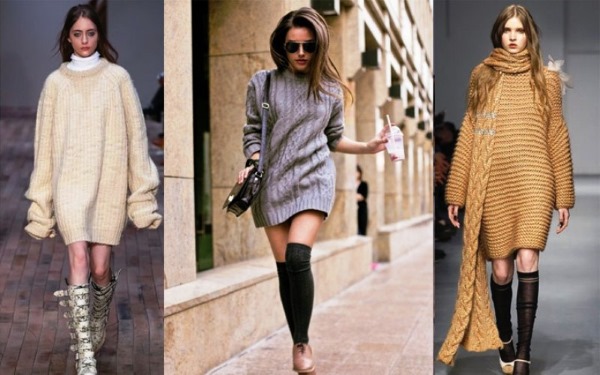

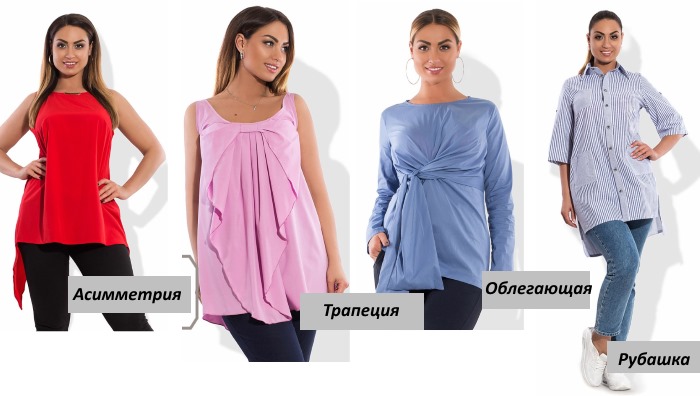
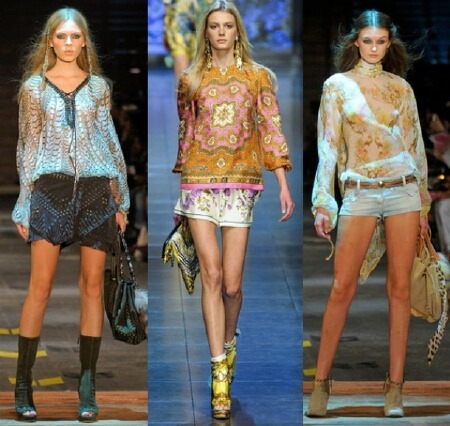
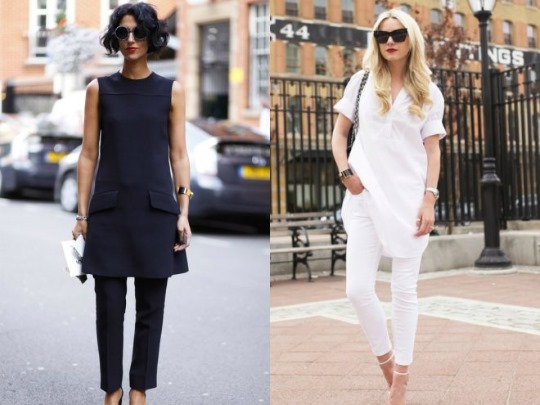
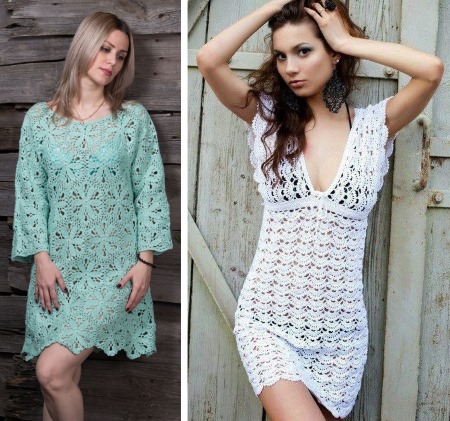
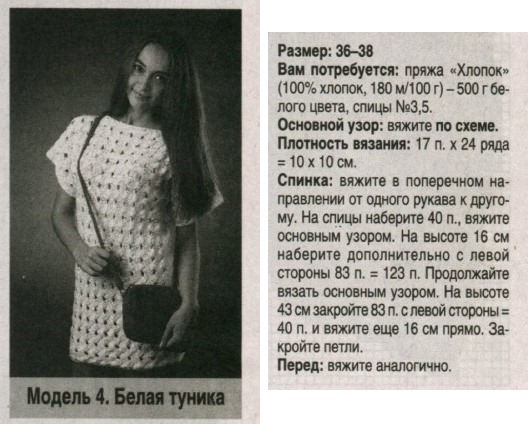
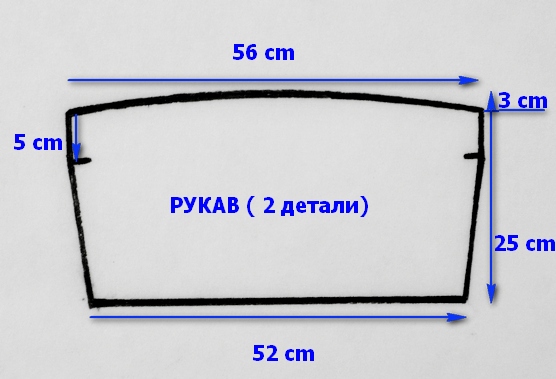
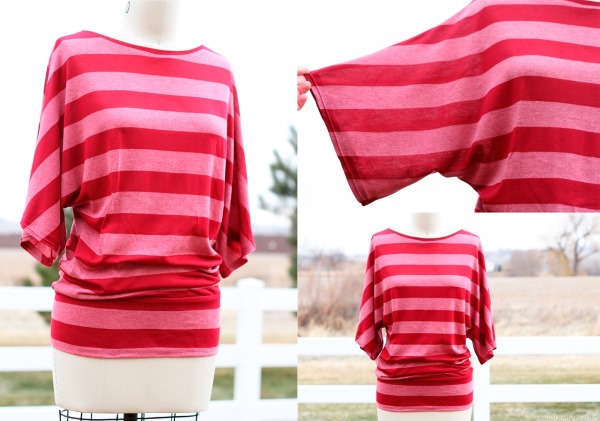
I love knitted and knitted tunics very much - in winter and autumn this is just a wonderful option!